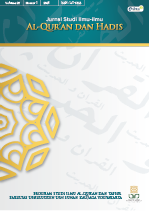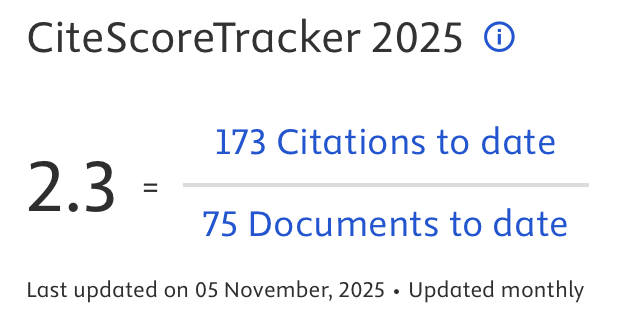THE DEFINITION OF THE SUNNAH ACCORDING TO ISMAILISM: A CRITICAL READING
DOI:
https://doi.org/10.14421/qh.2021.2201-09Keywords:
Keyword, Sunnah, Ismailism, Shi’i, Ahl BaytAbstract
This research discusses the understanding of the sunnah according to Ismailism. The understanding of the Sunnah has been dominated by the definition of sunnah according to Sunni, the characteristic of Sunni in understanding the concept of sunnah by using Sunnah as a source of Islamic law and also giving more attention to the ahl bayt and also to the Sahaba. This notion is different from Shi’ah’s thought that only believes in ahl bayt, regardless of Sahaba. The difference between the two groups in seeing the degree of Sahaba makes the deferent of sunnah among them. By researching some of the of Ismailism’s thought in the definition of sunnah, this study is expected to contribute ideas related to Ismailism's method in understanding the sunnah, and in judging the authenticity of sunnah, and to analyze the consistency of application to the sunnah according to Ismailism. This research shows that Ismailism followed esoteric approach to understand the concept of sunnah. This approach causes the sunnah position is not prioritized in the scientific structure of Ismailism. The reason for the small concern in Ismailism’s thought towards the Sunnah is basically started from their understanding about the verses of the Holy Qur'an, and their esoteric interpretation corresponds to the pillars of Ismailism.
Keywords: Ismailism, Sunnah, Sunni, Shi’a, Critical Reading
 Abstract viewed: 1448 times
|
Abstract viewed: 1448 times
|
 PDF downloaded = 405 times
PDF downloaded = 405 times
References
Al-Amali. Sheikh Al-Mufid. Beirut: Dar Al-Murtada, n.d.
al-Bâqî, Muhammad Abd. Al-Mu’djam Al-Muhfaras Li-Alfāẓ Al-Qur’ān Al-Karīm. Cairo, 1987.
al-Kirmani, Hamid al-Din. Rahat Al-’aql. Edited by Muhammad Kamel Hussein. Cairo: Dar Al-Fikr Al-Arabi, n.d.
al-Qushayrī, Muslim. Ṣaḥīḥ Muslim. Al Tab’ah 2. al-Riyāḍ: Dār al-Salām lil-Nashr wa-al-Tawzīʻ, 2000.
al-Sijistānī, Isḥaq Abu Yaʻqūb. Kitāb Al-Iftikhār. Al-Ṭabʻah 1. Dimashq: Dār al-Ghadīr, 2016.
al-Walīd, Ḥusām ʻAlī ibn Muḥammad ibn. Kitāb Tāj Al-ʻaqāʼid Wa-Maʻdan Al-Fawāʼid, 2011.
Hanbal, Ahmed Bin. The Musnad of Ahmad. Edited by Ahmed Shaker. Cairo: Dar Al Hadith, 1995.
Kulainī, Muḥammad. Al-Uṣūl Min Al-Kāfi. Beirut, 1985.
Kuzudişli, Bekir. “Şia’da Rivayet Olgusunu Şekillendiren Temel Unsurlar .” Dinbilimleri Akademik Araştırma Dergisi Cilt. Vol. 18, May 31, 2018. https://dergipark.org.tr/tr/pub/daad/435237.
Mahmud, Rami. Fatımîler Döneminde Siyasî Ve İdeolojik Bir Yapılanma: Kelamî Açıdan İsmailî İnanç Sistemi. Istanbul: Post Yayinevi, 2020.
Nawbakhti, Abū-Muḥammad. Kitāb Firaq Aš-Šīʻa. Istanbul: Maṭbaʻat ad-Daula, 1931.
Qāḍī, an-Nuʿmān. Daʻāʼim Al-Islām Wa-D̲ikr Al-Ḥalāl Wa-’l-Ḥarām Wa-’l-Qaḍāyā Wa-’l-Aḥkām ʻan Ahl Bait Rasūl Allāh, 1960.
Taimiyah;, Ahmad bin Abdul Halim bin Abdussalam Ibnu. “Minhaj As-Sunnah an-Nabawiyah Fi Naqdhi Kalam as-Syi’ah Wa Al-Qadariyah. Vol. 2 (3-4),” 2004.
Downloads
Published
How to Cite
Issue
Section
License
Publishing your paper with Jurnal Studi Ilmu-ilmu al-Qur'an dan Hadis means that the author or authors retain the copyright in the paper. Jurnal Studi Ilmu-ilmu al-Qur'an dan Hadis uses license CC-BY-NC-ND or an equivalent license as the optimal license for the publication, distribution, use, and reuse of scholarly works. This license permits anyone to copy and redistribute the material in any medium or format and must give appropriate credit, provide a link to the license, and indicate if changes were made. If you remix, translate, transform or build upon the material you may use it for private use only and not for distribution. Jurnal Studi Ilmu-ilmu al-Qur'an dan Hadis granted an exclusive non-commercial reuse license by the author(s), but the author(s) are able to put the paper onto a website, distribute it to colleagues, give it to students, use it in your thesis, etc, so long as the use is not directed at a commercial advantage or toward private monetary gain. The author(s) can reuse the figures and tables and other information contained in their paper published by Jurnal Studi Ilmu-ilmu al-Qur'an dan Hadis in future papers or work without having to ask anyone for permission, provided that the figures, tables, or other information that is included in the new paper or work properly references the published paper as the source of the figures, tables or other information, and the new paper or work is not direct at a private monetary gain or commercial advantage.
Jurnal Studi Ilmu-ilmu al-Qur'an dan Hadis journal Open Acces articles are distrubuted under the Creative Commons Attribution-NonCommercial-NoDerivatives 4.0 International (CC BY-NC-ND 4.0). Article can be read, copy and redistribute the material ini any medium or format under the following conditions:
Attribution — You must give appropriate credit, provide a link to the license, and indicate if changes were made. You may do so in any reasonable manner, but not in any way that suggests the licensor endorses you or your use.
NonCommercial — You may not use the material for commercial purposes.
NoDerivatives — If you remix, transform, or build upon the material, you may not distribute the modified material.










